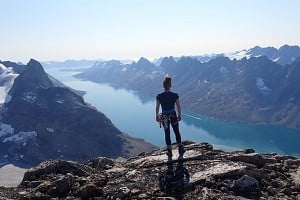
I'm not sure what I should have expected, but it isn't this. Me and Robbie have just come off the hill after another day trying to sketch together some faint new project on Ben Loyal in Scotland. The phone's ringing and it's Nico, "We've had a space become available on our trip to the Mirror Wall, do you want to come and try a new line with us? We're leaving in a couple of weeks."
"Yes!" is my immediate response, which I make without any thinking. Nico reassures me that it will probably only take five days to sail to Iceland and then a further three more to get to the wall. He also tells me that it won't be that cold, "It normally ends up being a total sweat lodge on these kinds of walls, once the sun comes round."
I'm only half listening anyway; this is the stuff dreams are made of – climbing with bona fide big wall royalty on a remote and out-there objective. I've been scrabbling around for years trying to get a keen team together to try and establish a hard new multi-pitch, and now the perfect opportunity has just dropped perfectly into my lap, leaving in a matter of days! Yes there are a few obstacles and things to worry about – like my general punterdom around multi-pitch climbing; that I've never done a big wall; that I've never been on a sailing boat; that the wall is located a significant distance from the ocean and none of the climbing team really seem to know where it is; that I don't play a musical instrument, or that Bob Shepton is going to be coming (an experienced Arctic sailor, but also 88 years old...)
There's barely any time to think though. I have a couple of days to get back into normal onsight climbing. This doesn't go well and I nearly fall off a sweaty E3 on the Orme (a bit worrying). Before I know it, I'm up in Scotland getting stuff on the boat. More details emerge that suggest there are a few extra obstacles I wasn't aware of. First of all, it's almost impossible to insure the trip; it's too remote for a helicopter to fly directly to the wall, which makes any evacuation complicated; the wall is also located 100 miles up the largest fjord in the world, Scoresby Sound.
This is packed with sea ice until the third week of July most years. And on the return trip, leaving after August is a seriously bad idea, as the temperatures plummet at the end of August and there is a much higher risk of getting swiped by one of the dying hurricanes that begin their lives in the Caribbean.
After a lot of organising and general inaction, the long awaited plastic barrels arrive and we can set sail. I'm particularly excited for the sailing. Whilst I've never sailed before, I have always loved the idea of being at sea. There is something about seeing nature at its wildest, being so utterly at its mercy, that appeals to me, and as we first round Mull and then very slowly begin our passage past Skye and the outer Hebrides, it's everything I always thought it would be. The weather is pleasant, the swell is gentle, and I am even beginning to vaguely understand how the sails work. Life is different here and whilst the boat moves slowly, we're constantly on the move, meaning even if we only do four knotts, we do nearly a hundred miles in a day. There is always something to see and as a school of dolphins come and play in our bow waves, it's easy to already start to romanticise the trip. But as we break out into the big Atlantic rollers, on our way to the Faeroes, darkness begins to fall, and the sea feels serious.
Everyone was keen to be on deck during the day, but for the night the skipper Mike has allotted each person a two hour slot. Mine is 1am until 3am, which is inconvenient for my sleep pattern, but means I get to helm the boat during the quietest (or wildest) part of the night. By the time my first watch comes around, the big swells have taken their toll and I stumble on deck feeling fairly worse for wear. Mike greets me and shows me the ropes.
His steel-hulled boat is part way through a major refurb and whilst he has done a solid job at the most important parts of the yacht (welded large new patches over corroded sections of the hull and ensured a strong set of sails and masts), the experience on board is still rather spartan – not least in the cockpit, where the only instrumentation useful for these ocean passages is a compass that I hope is pointing at least vaguely in the right direction. Fortunately what the boat lacks in equipment, Mike makes up for in experience, intellect and patient tutoring. After an hour or so he seems satisfied that I have sufficient knowledge of the wind vane and protocols surrounding meeting another vessel that he leaves me to it.
Being in charge of the boat in the middle of the ocean feels incredible, and the first watch is pure magic. I know Mike is only ever a shout away, but the illusion of independence and adventure is potent. The compass is largely unnecessary, with Skier Bank to our right, the two lighthouses give me a directional reference every minute or so – their individual patterns of illumination flashing northwards in sequence. The distant flashes simultaneously stir inside me both a feeling of loneliness, as well as a welcoming warmth. Below the lights I know is the tantalising suggestion of land, even if it's little more than a small pile of treacherous rock. This is sailing!
But as we plough through the waves into our second day out at sea, the lighthouses disappear and the boat gains a big unpredictable roll as the three or four metre swell catches it from the left. I'm alarmed at how dramatic the movement of the boat is, but as I chat to Sean B, the other sailor and ex-fisherman, I realise this is nothing and listen for hours to his jaw-dropping tales. The sea spray occasionally whips up and combines with the swell to produce what feels to me like the beginnings of a storm, but Sean shrugs this off as "a yachtsman's gale", without even the vaguest hint of condescension. I try not to imagine what an actual gale would feel like on this boat: it must be terrifying.
After hours of imagining Vikings crossing these same waters so long ago, eventually, we reach the Faeroes and I throw myself onto the quay. Solid concrete. I've never felt safer. We hang around these impressive and damp islands for a fair few days, prospecting the mostly disappointing climbing, before heading for Iceland on a much nicer two day passage. We are greeted by a singular boiling hot day, stomping around extinct volcanoes, before the weather changes and we head back for the boat.
After two weeks of what seems like an eternity of sitting around in a freezing Iceland, trying to occupy our time with fingerboarding in playgrounds and hanging around in an unheated and cramped boat, we finally get a favourable ice report and set sail for Greenland. There is a sizeable swell again and we're close-hauled, meaning that we're in for a couple of days of the most uncomfortable type of sailing, but everyone is excited to leave Iceland and the meat of the adventure feels as if it's just around the corner. As the third day at sea begins, eyes start to strain on the horizon. Night no longer exists and as faint lines start to become visible on my watch, we wonder if they're land or our first icebergs. It is inevitable that we'll encounter ice at some point – Scoresby Sound is still fairly chocked with the stuff – and I can't quite imagine what it will feel like to be sailing through it. As we get nearer, we realise that what we could see was indeed ice and my excitement is paired with a curious sense of vulnerability, realising that our 'open ocean' is no longer really open. I can feel Cornelia rapidly come into her own. This is why we brought the steel-hulled boat! Whilst I'm glad we're not in a fibreglass boat, I can't help but remember that the Titanic was also not a fibreglass boat... We tack to the east.
The painfully slow meander around the mouth of Scoresby Sound takes us away from the ice and then right back into it. There is a worry that we won't find a way through the ice at all. This would mean that we would have sailed all this way to get here, only to have to sail back the other way to sit and wait for the ice to melt in the big swells of the Denmark strait. This would be spectacularly uncomfortable, not to mention maddeningly frustrating. Fortunately, as we make our second approach, a space appears and we begin to sneak our way through the flat chunks of ice.
It doesn't take long for the sea to calm as we weave around the open channels, before finally the wind dies completely. My watch is long over, but I stay on deck to watch the sea thicken and turn black in the bright sun. And this is how we progress – through a sea of mercury, punctuated by bergs too bright to look at. No longer sailing, the motor of the boat forces thick curving bow waves to cascade across the surface of the water to our stern, blasting psychedelic patterns that mingle sea with mackerel sky. A faint mist trickles in and mixes with the plastic water and orange glow to create a scene quite unbelievable to behold. All around us is quiet and still. Aside from the motor, all we can hear is the occasional collapse of the ice. Silently, small black auks perch on the bergs, only to flap enthusiastically away as we approach.
We're making our way to a fabulously remote Inuit settlement on the northern edge of Scoresby Sound. Ittoqqortoormiit is a singular outpost, half way up the vast coast of East Greenland. There are so few people on this stretch of shore that the next nearest village is in fact hundreds of miles back in the direction we've come from, the south – back in Iceland. I think of this mind-boggling fact as we chug our way through the maze of ice.
When we leave Ittoqqortoormiit, we'll still have a hundred miles of complex ice to try and find a way through and if anything goes wrong, we've been told that we're out of range of a direct helicopter rescue. I'm not too concerned by this remoteness right now though – there's just too much action and serenity to enjoy. My initial fear of the icebergs has changed into an excitement, as we use the long wooden tuks to push them away.
As with everything that floats in water, it's incredible how large the pieces of ice you can move are, although eventually I notice that, as we push the really big ones, the 20 tonne boat is in fact moving more than they are.
Sean V, outlandish as ever, demonstrates an alternative technique, jumping from the boat onto the ice and pushing the boat away with his hands. This technique looks even more fun and I quickly copy him, enjoying the added excitement, knowing that if I mess my timings up, I'll end up either in the water or stranded on an iceberg! After a few very tight passages, we squeeze our way into the bay of the village.
Ittoqqortoormiit is unlike anywhere I've been before. There is no harbour, and large icebergs ominously prowl the shore, threatening any boat's anchor that is left unguarded. This may sound romantic, but quickly becomes very annoying, stopping anyone really getting any proper sleep. The village itself feels surprisingly lively, with brightly painted wooden houses, a very well maintained football pitch, and a small supermarket (where you may struggle to buy vegetables, but rifles and ammunition are no problem).
In summer, the quad bike reigns supreme, with the locals zipping around the dirt roads, powered by the very cheap fuel on sale near the helipad. The whole economy seems to be based around hunting. We are offered musk ox and killer whale teeth on our arrival and some bits of seal are being kept cool below the surface of the water by the shore. Apparently we just missed a walrus hunt last week, where the locals chased the animal into the bay and then shot it, butchering it on the ice. The Inuit may have arrived after the Vikings left, but they seem to have adapted to their environment with significantly more success.
In spite of the supermarket and the few other comforts afforded by the village, we're keen to get further up the sound. Time is ticking and we only have a few weeks before we need to make our way back to Scotland, hopefully missing the storms. As we depart the village, we quickly encounter the worst ice so far. The bergs aren't tall, but some of them are the size of football pitches and there is no chance that they're going to budge by us prodding them with sticks. My job today is to climb the mast and look for a way through. No one seems keen to be up at the top of the mast all day, but I see it as an excuse to drink tea and eat shortbread in the warm sun.
The vantage point from fifty feet up is significantly improved, but in the middle distance, everything looks like fast ice. After several hours I gain the confidence that what looks like fast ice generally opens up into something we can very slowly navigate around, but this isn't always easy, as the optical illusion always makes the way to the side look more open. The temptation to deviate left or right is always there.
Balancing the desire to get there with some level of caution is tricky and, inevitably, I become a little over optimistic at one point. I radio down "straight ahead" and the rest of the crew shout back with justified disbelief. Events move quickly in this terrain and by the time I've answered back with the best confidence I can muster, we're committed to the 'channel' I've selected.
I quickly realise my mistake. The bergs either side are massive and there's no hope they're going to move. Below the waterline I can see large emerald tongues of ice that are fortunately less apparent to the rest of the team. We may just get through this bit – it is only slightly narrower than the boat and the boat has some carving power, but we are then going to have to do a full 90 degree turn to the right and the berg to the left will not allow Mike to swing the rear of the boat around until we're entirely clear of it. Thank god we're in a steel boat!
My view from the top of the mast is comical. Mike steering, the two Seans desperately tucking at the bow, Nico and Ben fending off our stern. We make it through the gap to then knock a smaller berg out of the way. We slowly but sharply make the turn to our right, towards an even smaller gap that the boat definitely won't fit through. Despite the rapid turning of the boat, there's no way we're going to be able to hit this second gap and we plough slowly into the centre of the next berg. The boat shakes, reverberating up the mast.
Fortunately this tennis court-sized berg isn't quite as massive as the last one and it does, almost imperceptibly, begin to budge. Sean jumps onto the ice to give us every chance he can and, amazingly, we begin to get another brief whiff of open water.
I expect to get a bit of a telling off for taking us into such a daft corridor, but I think everyone has had too much fun to be annoyed. There are many other slightly less close calls over the next two days that make the uninitiated among us feel like we're proper Arctic explorers, and even Bob and the Dodo's Delight gang seem to have found the past few days' antics exciting. They draw particular attention to the duration of this dense ice negotiation, which at around 90 miles, is much longer than they've done previously.
The next morning I wake up to the bliss of a boat without an engine on. Are we there? I crawl out of my bunk and onto the deck to find the boat frozen into a thin layer of refrozen ice. The scene is another one of profound peace. In the distance are the jagged mountains of Milne Land and the Bear Islands, which guard the way to the Mirror Wall, but before that is a vast scape of perfectly flat slush and ice. "Why have we stopped?" I ask Sean B.
"We were ramming the ice, but it was getting thicker as it was getting cooler and had formed one massive thick sheet. So we stopped for the night. It's okay though, we've drifted a mile in the right direction whilst we all slept."
This is good news, not least as no one had slept properly for quite a few days – even in Ittoqqortoormiit the bergs that stalked around the shores of the village meant someone had to be on ice watch and the loud graunching noise woke everyone else up anyway when the big bergs hit. Now way out further west, eventually the sun brightens and the ice begins to thin. We motor the last ten miles past gigantic mountains of ice. These are no longer bits of pack ice, but floating pieces of glacier that must linger here for years on end. I feel a mix of fear and awe as we skirt by these monstrous ice cliffs, sometimes only tens of metres away.
As with everything on this trip, the anchorage we're aiming for is somewhat of an unknown, unchartered and rarely visited. The inlet remains deep most of the way in, but then dramatically shallows to only a few feet. It is so shallow in fact that it takes Sean B and Mike a whole day to unload our stuff from the boat and to our basecamp, which is only a few hundred metres upstream. The dingy hits the soft sand, in spite of its tiny draft and someone (usually Mike) has to get out and pull the dingy by rope. Conveying our hundreds of kilos of stuff is an exhausting and time consuming process, but the source of much comedy. Mike has the bright idea of tying all the barrels together to create a hilarious raft of all our belongings. This seems to be surprisingly effective, even if it looks thoroughly ridiculous.
After half a day on land, exploring the excellent bouldering on hand, we make plans to take the first load up to advanced base camp the next day. We know there is a good point to camp at a couple of days walk up the glacier. This is where those who can afford it get dropped off by helicopter, but some Swiss friends of Sean and Nico have done the walk up from our base camp at the sea before and have drawn us an incredibly crude map of the way to the Mirror Wall. We've been told that the terrain from base camp to ABC is horrendous – a combination of crevasses that need to be avoided, some ice cliffs, and very difficult moraine. As with everything they do however, Sean and Nico are keen not to 'murder the adventure' and seem determined to deliberately not follow the information we have on the best route. This works well up the initial glacier and we cut off a bit of a corner as the glacier swings around to the left, but we eventually find some more complex glacial streams that need crossing. We manage to jump these, or wade through them, making good time in spite of our heavy loads.
As we descend off the back of the first glacier, we are surprised to find that, where the glacier has melted, huge chunks of ice have been left stranded in the mud. This leaves a strange landscape reminiscent of a Dali painting, with sun-sculptured bergs perched precariously like grand obelisks. These gradually fizzle out, as the land beneath them dries and turns to sand. From here, a desert stretches forth for several miles and we gain our first view of what we suspect to be the top of the Mirror Wall. We expected a lot of varied and challenging landscapes, but to find an actual desert, complete with sand dunes and wadis is a complete surprise. The walking is at times challenging in the sand, but a lot easier than jumping over crevasses with heavy packs. None of it, however, is anywhere near as challenging as what is looming in front of us. As the moraine gets closer, it presents its true horrors: huge piles of constantly moving stones, ranging from the tiny to those the size of a house. A base of ice means the jumble is constantly reset, perched perennially on the point of maximum disorder.
Looks aren't deceptive, and as we begin to climb up and down these great piles, the going is both exhausting and alarmingly dangerous. The rest of the team seem to stick to the mid-sized blocks, which sees them constantly battling with the slide. Like crossing deep snow, they descend a step backwards for every two steps they make forwards. I try and stick to bouncing between the larger rocks. Big rocks tend to move less, so I can save some energy, but when they go, the risks are greater. I rely on reaction times and improbable balance routines to get me out of trouble.
My success is mixed and it is surprising how much even the very large rocks can move. The piles of scree continue for miles, through bits of brown ice and river crossings. I am really starting to feel the weight of my rucksack by this point, just as we start to enter an even more sharply descending crevasse, covered in scree. I take my usual convoluted and ambitious path through a mix of perched boulders and ice and everyone else sensibly decides not to follow me. Ben, Nico, and Sean take a different way, hidden around the back of a small pillar of ice and it is at this point that Nico falls.
He slips rather innocuously into an icy pool, but unfortunately at the bottom of the pool there is a very sharp piece of granite, like a large natural sword. This cuts his shin very badly and our journey suddenly stops. Our adventure is now a rescue mission. How bad is it? Can we treat it? Can we arrange for him to get stitches? Will it take too long to get him somewhere with medical care? Can we stitch it ourselves? Are there alternatives to stitches? How does he get down? Can he walk? How can we get him back across the river crossings without him getting his leg wet? These questions all get answered as best we can, but for now, we need to stop and rest. We find a talus hill above the little gorge we're in that will make an adequate camp for the night and I sleep like a baby.
The next morning we all wake up feeling knackered. Yesterday was a long hike that we did too fast, carrying too much. There is genuine uncertainty in the air today – it was a long way to get to this point and much of the terrain was atrocious. Is Nico going to be able to walk that far? Can we carry him if not? Fortunately these questions are quickly answered as Nico hobbles rather quickly down the first hill. We carry him over the first river crossing and that also goes well. Before we know it, we're back in the desert, across the next river crossing, back to the city of stranded ice bergs, across the big glacier, another river crossing, and then making the painful stomp along the steep heathery hillside back to base camp.
We've already radioed Mike on the boat. He comes ashore with Sean B and we enjoy the company, some good food and we take a closer look at Nico's leg. It's a very bad cut, down to the bone, but it would be a fairly minor injury in civilisation. In spite of this, we talk a lot about evacuating him. We wonder whether sepsis would develop more quickly than a helicopter could fly here and take him out. It probably would, but Nico takes the chance. We've cleaned it well and Mike manages to stick it back together using bits of plaster and dressing. We decide that as long as he doesn't move his leg too much, the repair job is as good as he's going to get and it may actually stay closed. But one thing is for certain: Nico isn't going to be carrying any more loads up to advanced base camp.
The challenge has just got significantly greater. For me, I am already well outside of my comfort zone. I've come on this trip as a last minute impulse and knew next to nothing about what I was letting myself in for. I knew of Sean and Nico's breadth of experience and had looked forward to just sitting back, putting in some graft, but mostly following their lead. I'd already found the weeks at sea challenging, found myself in a hugely remote and cold environment, trying to reach a rock objective that was wildly remote and outside of my skill set.
Before the accident it was okay. There was a strong partnership that me and Ben could follow. Ben said that he was "mostly there as a photographer", which I didn't totally believe when I heard the long list of impressive ascents he'd made over his 48 years of life, but before this point there was definitely the sense that me and Ben were along for the ride and in safe (if not crazy!) hands. This comfort has just been torpedoed. We haven't weighed our equipment, but we estimate it is getting on for half a tonne. By losing Nico, we haven't lost much stuff from the kit list we need, but we have lost someone able to carry big loads. This isn't just losing a quarter of our carrying ability either. Ben has a lot of camera gear to carry, which needs to be taken up and down on each shuttle, meaning he can only take little bits of extra communal gear. Without Nico, all the rest of the stuff has to be divided by two, rather than three, so the heavy loads are about to get even heavier!
The next week or so turn into a pure endurance event. We forlornly scatter our equipment across the ground, looking at the hundreds of metres of static rope, the quadruple rack, the portaledges, the tents, the aid gear, the entire haul bag full of nuts, and the rest of the supplies we need for a month in the wilderness. We then slowly take items and pack them into our rucksacks, as we do, feeling the future pain in our shoulders with each step.
Early in the day it is easy to be optimistic and put too much in, only to then be close to collapse by the afternoon. We lie on the ground with our enormous packs, like stranded tortoises, dependent on each other to be pulled to our feet. Occasionally I pack way too heavy and am in agony a few hundred yards into the day's walk. We then weave around crevasses, jump over them when a dead end is reached, slide down mud and sand, wade through river, up more dunes, skate through the scree, slide as the rocks move, get poles stuck and face plant into boulders – more cuts, more bruises, wet feet, sand rubbing in boots, blisters (the first I've had in fifteen years), socks dissolve, sweating in the desert, frigid katabatics, chilled to the core.
After a couple of days we arrive at advanced base camp for the first time. We celebrate – we're here, at the point that most expeditions begin. It feels surreal to be here after such a long trip and to be so close to the Mirror Wall at last. The final approach up the last glacier looks treacherous, with lots of big holes and soft-looking snow, but for now this isn't a concern – we first have to turn back around and head down for the other loads. There are many more days of carrying and bright nights spent out in the open. If we're lucky, we sleep clutching the rifle, ready for a polar bear attack. In normal life I rarely struggle to sleep, especially when I'm this tired, but with my imagination running wild, I have little chance of recovery.
The silver lining is that I didn't listen to Nico's prediction for the weather, and with my insulated trousers, jackets, and sleeping bag, I am at least warm. I spend hours looking at the mountains, feeling the peace and the remoteness. I can't imagine what it's like here in winter, outside of this very brief window when the cold is not extreme. Eventually we reach advanced base camp with the last load and I sink to the ground. After all that moraine, I'm delighted to not have a serious knee injury, and we make preparations for the final shuttle up to the base of the wall.
The last glacier is only a few miles long, but it's steep and very involved, with some deep snow, and it takes us most of the day to get a load up to the start of the climb. Large rucksacks add to the worry as we cross the snow bridges and ice ridges. As the angle lessens higher up, there is an illusion of safety, but occasionally our feet still break through the ground into very large crevasses and we're happy to have a rope on.
It only takes a few more days to shuttle the remaining loads, fill a hundred litres of water bladders, and fix the first few hundred metres of climbing. Sean makes a very bold lead of the bergschrund and ice slope, realising half way up that it isn't 40m long, as it looked from the ground, but more than double that. Fortunately he only has one ice screw in and one 60m rope is hanging totally free of protection. He pulls this up and ties it to the other rope so he can now lead a full 110m pitch with his remaining two screws. I'm impressed with his speed and enjoy playing around with ice climbing on second, but am glad not to have had to lead that.
The rock climbing above is easy but extremely loose, and we fix our ropes until they run out. Once we exhaust our static ropes, we return to ABC for a final sleep and meal, before committing to the wall. To our surprise, as we arrive at 1am, we find Nico is there, along with some French climber-sailors from another boat that he's made friends with during his convalescence in the fjord. It must have been a bizarre place for him to have made friends, and we smirk to ourselves that he's managed to charm them into trekking all the way up here, carrying his gear. I'm excited to see they've brought a bottle of wine with them. I can tell it's very good, but can barely taste it in the cold. I'm happy to feel the effects, even if I'm sad to miss the bouquet. I go to sleep.
I find it hilarious that Nico has joined us right at the moment that we're committing to the wall. There's no ill-will, even though he's carried nothing and we've had such a gruelling time, we're just happy to be back as a team. Nico makes conflicting noises about the objective. I think he approves of the lofty ambition of the central line we've chosen to try on the face, but he shares our doubt about whether something like this will ever be climbable with only the fifteen bolts we've brought. I've never placed a bolt in my life and, whilst it's not necessarily a die-hard ethic of mine, I still don't really feel like placing one in such a rugged and untamed place.
But, even for a total big wall beginner like me, it's obvious this thing isn't going to go down without a shed load of bolts. I know we have another fifty bolts back at base camp and volunteer to do an extra forty mile round trip to go and get them and the extra static that we could really do with. No one's keen, and Sean in particular seems to be content with the minimalist approach. In spite of him being willing to place bolts, he has a strong personal ethic that he doesn't want to place a bolt ladder. I ask him what the definition of a bolt ladder is and don't really understand the answer. He allows himself to hang on a bolt and then free climb a few metres to then place another bolt, or sky hook between bolts, but he doesn't want to stand in his etriers on one bolt and then drill another. This world is all so foreign to me that it takes me ages to understand exactly what his ethics are, and it's only weeks later that I really get what he means. So with fifteen bolts, four removable bolts, a few rivets and 300 metres of static, we commit to the wall.
Ascending our few hundred metres of fixed line should be easy enough, but I find I'm tired in spite of the relatively easy terrain. Nico and Sean have convinced me I only need one jumar, which seems to work for them, but I find it exhausting. This is also my first time hauling bags and I find the required mix of core-engagement and general bouncy movements tires me even more. By the time we have our first porta-ledge camp up, I crawl into my sleeping bag fully clothed, helmet still on, and instantly fall into a deep sleep. After more of the same the next day, on top of the ten days of walking without rest, I am thoroughly exhausted and am pleased as the pace of ascent slows. We've hit the blankest part of the wall now and progress is reliant on hard climbing, aid, and the occasional bolt. The line we take weaves left and right, taking in the best features and flakes as they appear in the middle distance. Nico leads a short section and I attempt, and fail, to push through a blank section free climbing, but mostly it is Sean V leading, and it remains so for the next week.
"Who's belaying Sean today?" is the running joke. Mostly Sean seems to love the challenge, the fact that he is the only one willing to place the bolts, risk the run outs, and hope that a feature or belay appears. But he must be feeling the pressure a little bit – he's the one who really wants this scalp, to climb this face, to face this climb. He never seems to take enormous falls, but he is ripping skyhooks, taking grand pendulums, and screaming as he slides.
As we get higher, the face gets steeper and it starts to feel more serious. I belay Sean for eight or nine hours one day, hanging off of a single bolt and a loose flake, swapping my feet on the only foothold as the hours tick by. One of the poorly placed hand-drilled bolts lower down is starting to come out as we jumar up on it each day and I can't stop thinking about this as Sean wrestles with copperheads, bird beaks, and skyhooks above me. Surely this belay wouldn't withstand a factor two fall?
Fortunately, we've done such a massive traverse in the last pitch that we're actually level with the last belay rather than above it, so I pull the static rope tight and tie us off on it. At least if the belay rips, we'll just take a 100m pendulum across the slabs now!
At times the belaying is engrossing and I'm willing Sean to make a move out of the slim groove and onto the face on the left. My focus is occasionally broken as he pulls a small rock off and I duck for what little cover I can find. Another time he rips a skyhook he's testing and falls backwards, the hammer falls from his hand and swings in large arcs from his harness. I realise that a proper fall may result in Sean and a hammer flying towards me, and so I pull up ten metres of lead line and tie it off in case I get knocked out – the last thing we want is for him to free fall sixty metres onto this belay, or off the end of the ropes.
Sean makes sustained progress and eventually tensions his way across the face, switching to rock shoes and busting out some hard free moves. He is tantalisingly close to a small dihedral and I start to think he might make it. There's a lot of rope out and I'm not too sure the bird beaks will take such a massive pendulum. He tensions more and more to the left. The further he goes, the more unbalanced he becomes, until he can take the tension no more and he comes hurtling back towards me. His feet clip my shoulders and the hammer spins around my head. I move my head around as if I'm playing swingball, until eventually the hammer loses its force. We're now five hours in and Sean is right back where he started!
The days continue like this, with the theatre of doubt and success repeated over and over again. We can see an obvious crack system higher up that is almost certainly a path to the summit and we're only a pitch or two away. Eventually Sean manages to make it into the final dihedral that should only be a handful of metres from success, but all he finds is a blank corner and loose rock.
He struggles through this, methodically as always, placing a rivet from a stress position and then free climbing to an exposed bridge, stemming for his life, climbing shoes skating across the dust. He pushes, then shuffles, then screams, then falls. He's not injured, but he is becoming tired, and he is finding the positions untenable. He goes up again and again, ripping hooks as he tries to place bolts, pumping out whilst trying to place a rivet from a stance. More whippers. More fear. I start to acutely get a sense for where we are and what Sean's doing.
Of course we're remote and out on a limb on this wall, but we're also blasting sideways across a totally blank face. If anyone gets an injury, helicopter rescue is impossible. We are completely self-reliant and whilst we might be able to get someone down, I'm not quite sure how we'd be able to get them out so sideways. We don't even have enough bolts to ab straight down, even if we could place them. And the terrain below is completely blank, without any hope for trad protection. So it's with some relief for everyone that Sean finally calls it a day.
We sit on the ledge back at camp, a mixture of dejected and relieved. Ever since we set out on this wall, I've never really entertained the idea of getting to the top, but I now feel a very small pang of sadness when I think that we have ultimately failed in our objective. If this is a failure, I bare as much responsibility as anyone. I know I did well in the walking part of the trip, but my lack of ability with hard aid climbing and unwillingness to place bolts has made me fairly useless on this wall. I start to wonder whether I should have been more willing to place bolts. Sean has put in the effort of a lifetime into this line, whilst the rest of us have mostly sat back and let him lead everything.
Even if I'd just led a handful of the more straightforward pitches lower down, maybe he'd have had more energy to get through this next dihedral? Maybe I should have had a look at the dihedral after him, aiming for the final crack? Perhaps I might have found a way that could have gone free: Two sets of eyes are always better than one. Mostly though, I should have just got my ethics sorted before I came on this expedition. I imagined that I would be placing bolts on this trip, but somehow, since we have been on this incredible granite scape, I just really haven't felt like drilling holes in it. Perhaps this is actually for the best? Surely there's a beauty in failure like this, especially for whoever tries this wall next. We are now leaving this place with that high crack remaining a myth. It is beyond our reach, rather than debased into an instagram feed and some hollow words – I can at least take solace in that.
This failure means we now have chance to free climb some pitches, and I manage to lead a short section between two ledges that is one of the blankest on the whole route. It's not quite a whole pitch, but is probably the hardest bit of climbing I've ever done outside of the Llanberis slate quarries.
After a few falls, I manage to link together the thumbsprags, tiny foot presses, and finger nubbins to produce something very implausible. I take a huge amount of pleasure in the devious line I've woven on this pitch and also in managing to climb something so hard in this remote location. I can't help but laugh that such a hard bit of free climbing will only add to this unclimbed line's aura in the future, but with a faint hint of success, I'm happy to leave this place.
The spires are as beautiful as always in the late August glow and we begin to experience the darkness of the cold nights. I'm still completely knackered and we now have to shuttle all our gear back down to base camp, onto the boat and then motor back out to sea. The ice bergs still hang in the fjord like old friends and we hit the sea to good winds. It feels like a poetic finish to a mad trip.
We are keen to get back to Scotland as soon as possible, but have to drop Ben off in Iceland before continuing on our journey. It's a two day crossing with fair winds, but we've decided that if the wind dies, we'll just turn on the engine and motor – we have to get across before the September storms come. Predictably, on the second day at sea, the wind fizzles to nothing. Mike, the skipper, goes to turn on the engine, but nothing happens. Mike checks the battery and then every other bit of the engine, but nothing works and we just float. The engine has seized. We're now in the middle of the Denmark strait, with the summer quickly disappearing and with no way of moving or steering.
I sit on deck, feeling the moderate swell, and watch the sails flap uselessly for hours. We pray for wind, but not too much, just enough to push us into Husavik. It doesn't come. Without water moving over the rudder, the boat just spins with the current and we completely lose all sense of direction. No one has very much left to say, so we just laugh and eat rotten food. The nights have come back now and it is on my freezing cold watch in the middle of the darkness that the sails finally begin to fill. At first the wind comes and goes, banging the rigging as the sails fill and fall, but eventually they stay inflated, just a little. We get up to a couple of knotts, painfully groping our way south for the rest of the day until we arrive in the bay of Husavik. We lash the dingy, with its little outboard motor, to the side of the bright orange yacht for the final mooring. In the end the wind is so perfect that we barely need it. And then, finally, we are there: back on land.
Iceland is not home, but it is close enough to what I know to feel like the trip has ended. You can buy stuff here, talk to people, eat nice food and travel around. The boat will take many weeks to fix, needing a full engine rebuild, so we spread out across the island and find our own ways to our own homes. The trip is already in my memories and begins to occupy a less acutely painful place in my mind. There are strange feelings I never felt at the time: tinges of achievement, some kind of meaning, a beginning and an end.
I won't forget the constant dull fear I felt for the rockfalls, the bears, or the sea. But I fear that one day in the future I will think it was all worth it. Time has given me a new perspective and now I will never know the truth. Now it feels to me like the jewel was that short bit of climbing on the blank face, as if the months of sickness, exhaustion, and cold were worth it for being able to release that choreographed routine from the stone. Not even really a pitch, it was a place and a moment of true magic, where I felt purpose and sanctuary in an otherwise very scary world.
Now, unable to know how I truly feel about the trip, I struggle to answer the question "Are you going back?"
- ARTICLE: How to Become an E10 Climber 1 Apr, 2023
- OPINION: The Blurry Line - When does a sequence become a line? 9 Feb, 2022
- ARTICLE: 2021: The Year of the Headpoint 15 Nov, 2021
- DESTINATION GUIDE: North York Moors Limestone 9 Apr, 2019
- ARTICLE: Franco Cookson's Guide to Headpointing 15 Jan, 2019
- DESTINATION GUIDE: Spittal Crag, Northumberland 16 Oct, 2018
- ARTICLE: Franco Cookson's Guide to Highballing 13 Jun, 2018
- DESTINATION GUIDE: The Yorkshire Coast 16 Apr, 2018
- DESTINATION GUIDE: North York Moors 15 May, 2008

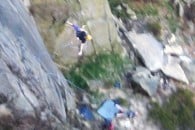



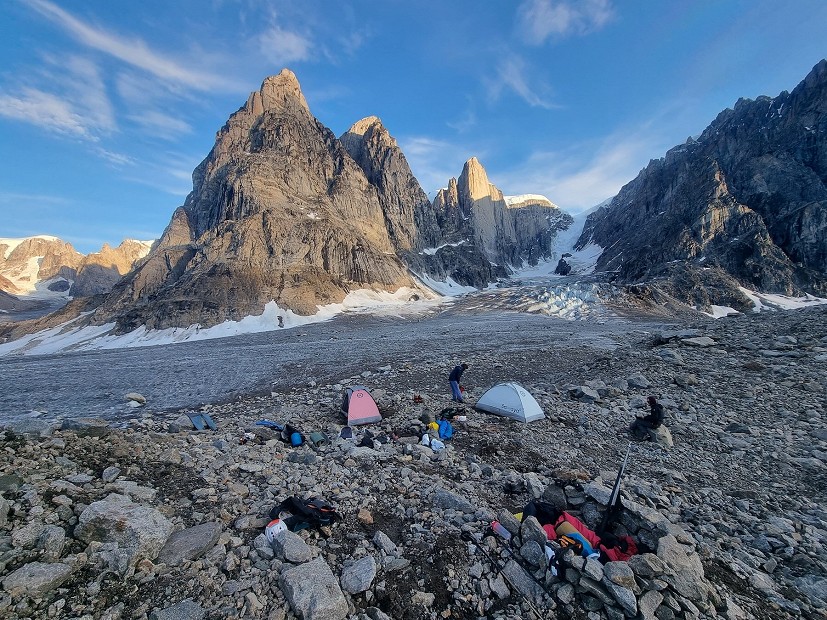

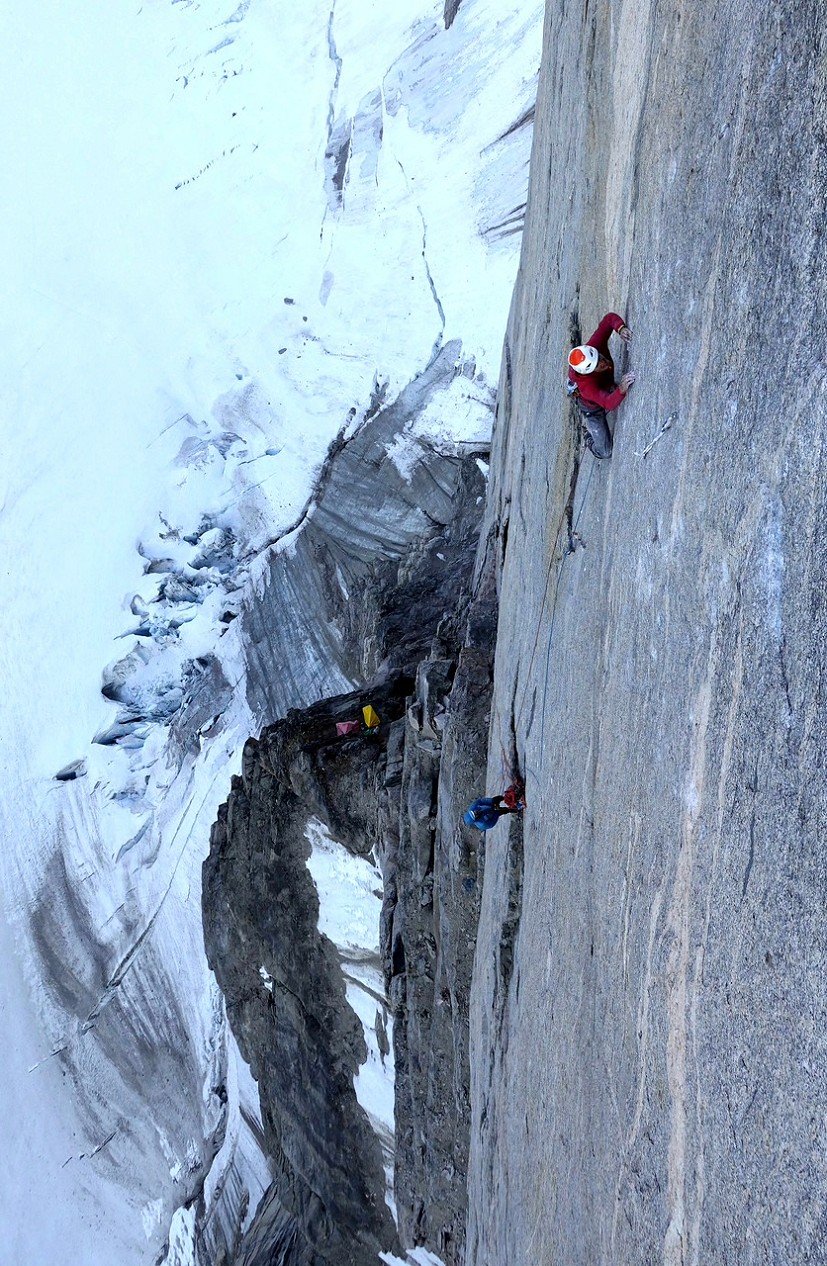
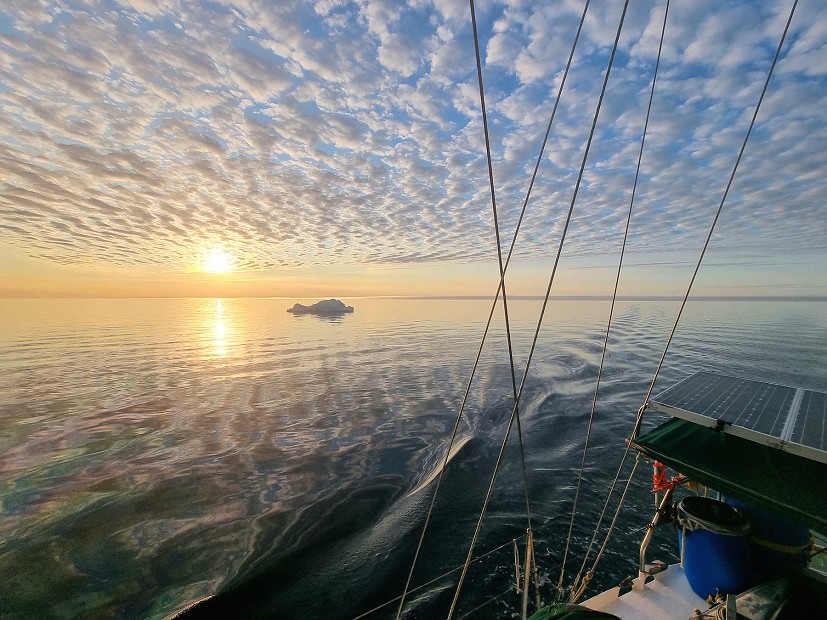

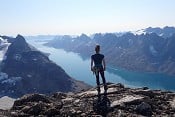
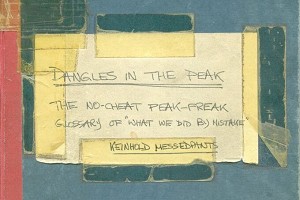
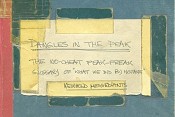
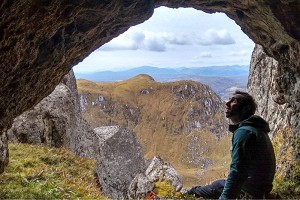
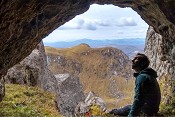









Comments
Wow!
Really enjoyed that. Reminds me of a trip to Chile in 2020 where we didn't get the prize, but had a wild time trying. Similarly, the most memorable pitch for me was a direct link that straightened out the crux pitch (which was a dogleg over 2 pitches), up blank, just off vertical technical granite at a slightly lower grade than the original. Mesmerisingly intricate climbing that kept threatening to blank out, but somehow little hints of progress kept appearing and they way opened up. Could potentially be the most memorable single putch I've climbed, yet it's untmeitely insignificant and may never be climbed again.
Thought he was more into knotted ropes than bolts? 🤣🤣
Really enjoyed your writing thanks Franco. I rarely have the endurance to plough through someone else’s account of their climbing expedition but yours had me gripped to the end.
Really enjoyed that and sounded like a very memorable expedition - enjoyable and successful despite the failure on the main rock objective.